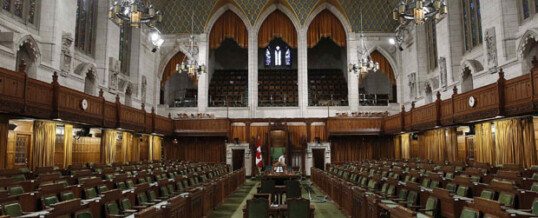
McLeod Group Blog, Sept. 10, 2015
[Second of three McLeod Group blogs on the subject of Coalitions]
With a federal election in the offing and polls showing no party likely to win a majority, there is renewed talk of a coalition government. Canadians look back nervously to the fumbled efforts to create a coalition in December 2008, and some basic questions arise. What is constitutionally legal? What is allowed under Parliamentary practice?
The basic rules of government-forming in Canada are informal, derived from established parliamentary practice, not law or unambiguous rules. There is indeed no mention, positive or negative, of coalitions in the Constitution Act of 1982.
A coalition involves two or more political parties agreeing to govern jointly, based upon a formally agreed common policy program and shared political power, rooted in a viable and stable majority in Parliament. While there are multiple precedents in Commonwealth and European democracies, there are few in Canada (see previous McLeod Group blog).
Canada is a relatively new nation in legal terms and established practice. We cut our ties with Westminster, but kept the link to the Crown, represented by the Governor General (GG). The person called Prime Minister (PM) looks and often functions as all powerful. However s/he has no detailed constitutional role. The PM is mandated to chair the cabinet of ministers, carry out various ‘executive’ actions and advise the GG on issues such as new legislation and high level/order-in-council appointments.
Voters chose their individual Member of Parliament, not the Prime Minister. That latter choice rests with the Governor General, based upon one critical test, that of being the person best able to command the confidence of the House of Commons, meaning having the reliable support of a majority of the members in the elected Parliament. In practice, Canadians are accustomed to the leader of the party that wins the most seats automatically assuming head of government. In a coalition, that majority does not come just from the Prime Minister’s political party, but also from one or more others.
Immediately following an election, an aspiring PM, even one with an agreed coalition, is at a significant disadvantage since in Canadian practice, the last PM remains PM until the GG selects a new one. The opposition needs to find informal ways to show their ability to form a stable government. A coalition’s no-confidence vote does not need to gain the support of a large majority, but it should be sufficient to assure the GG of reliable support. Importantly, convention says a PM cannot propose him- or herself to the GG as the next PM.
In today’s context, a Conservative minority win could likely be defeated by the coming together of the Liberals and the NDP. However first the GG would have to be convinced of their partnership deal and see a successful no-confidence vote.
Of course, a stable government can also be achieved via a minority government (Conservative, NDP or Liberal), when the opposition parties prove unwilling to share power or fear to join together in a no-confidence vote that would potentially trigger a new election. Minority governments themselves are based on shifting, more informal coalitions.
In the event that the GG initially approved a minority Conservative government, an aspiring coalition would need to work within Parliamentary conventions that constrain their opportunities for putting forward a confidence vote, one which satisfies the GG as meeting the conditions to force an existing PM to resign. They will also need to show the GG that there is a potential new PM able to form a new stable government.
A confidence vote can follow a throne speech or a budget, or it can take place on any of the designated Opposition Days, of which there are about 20 per year. The opposition would need, at least informally, to show the GG a viable coalition agreement. Even then they can face, as they discovered in 2008, a PM who can play his own tricks, proroguing Parliament and blocking access to a timely Opposition Day.
Thus, following a new election in October 2015, there are several possible scenarios:
- The Conservatives win a majority again. No change.
- One of the opposition parties wins a majority and forms a new government.
- The Conservatives win a minority, but Harper—to avoid the indignity of a successful opposition ‘no confidence’ vote—quickly resigns. (In a CBC interview with Peter Mansbridge on Sept. 8, Mr. Harper said that under these circumstances, such a resignation would be his plan.) The GG would then invite the largest opposition party to try to form a government, via a coalition or as a minority with credible informal support from the other major Opposition party or parties.
- OR Mr. Harper as the incumbent PM announces he will form a new minority government, as in 2008. The NDP and Liberals could hastily organize a coalition accord and announce their intent to vote ‘no confidence’ on the first available Opposition Day or other early opportunity, e.g., the first budget. The GG would almost certainly go with precedent (i.e., leave Harper temporarily as incumbent PM), until the proposed coalition shows it is formal enough to have staying power, notably via a convincing win of a ‘no-confidence vote’. The GG would need to be very wary of any prorogation request that is intended to delay or block a vote of ‘no confidence’.
- The Conservatives win a minority and the opposition parties do nothing.
- We return to the situation of the Harper minorities of 2006 and 2008. The opposition parties might only present a ‘no confidence’ vote after some time (a year or more). If the vote succeeds, after this time the GG is quite likely to favour a new election in the absence of a very convincing coalition or informal partnership accord.
This may seem complex, but with three major parties running neck and neck, it is a complexity that Canadians may need to address after October 19.
